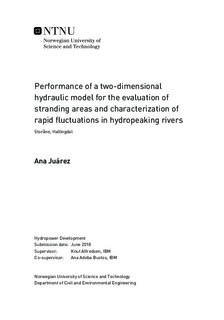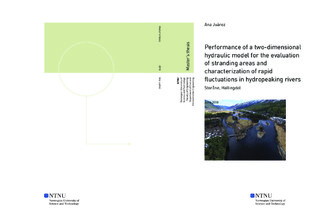| dc.description.abstract | Extreme, short-duration fluctuations caused by hydropeaking occurs when hydropower is used to cover peaks for electrical loading conditions of the power network. Such a rapid dewatering processes may have a high impact for biological species, especially fish stranding. The present work analyzes these fluctuations using a two-dimensional unsteady model approach for quantification of two important hydro-morphological factors on fish stranding risk: the wetted area and the dewatering rate. This approach was applied on a 2-kilometer-long stream in Storåne, where topobathimetrical LiDAR data was available providing a high quality digital elevation model. Results show that the attenuation of the fluctuation due to the damping effect along the reach has a relevant role in assessing the dewatering speed. Moreover, the outcomes underline the need for mitigation in this area. We recommended an alternative scenario operation which combined with physical and biological data can help in decision making for developing constructive and morphological mitigation measurements. | |

